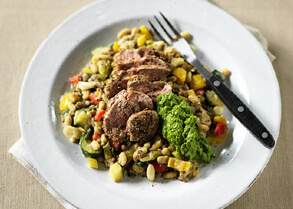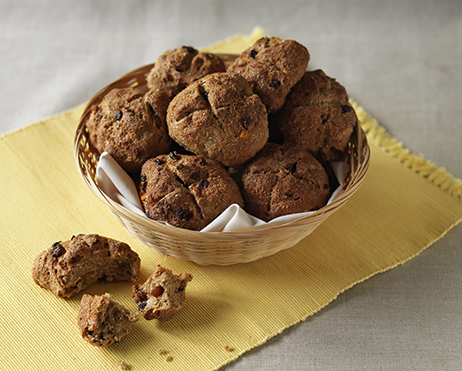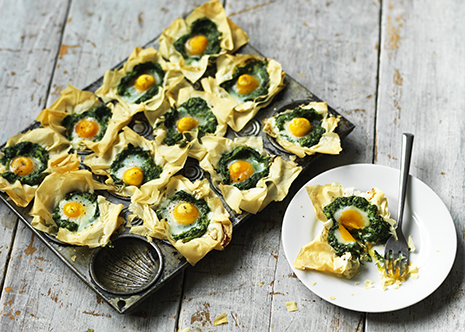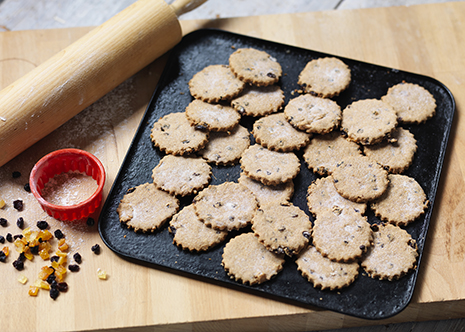 Easter is a time for family, friends, new beginnings, and you guessed it ... chocolate.
Easter is a time for family, friends, new beginnings, and you guessed it ... chocolate.
When you have diabetes it’s important to make healthier food choices and be smart with the foods you choose. This means swapping foods high in saturated fat, sugar and salt like crisps, biscuits and chocolate for yoghurts, unsalted nuts, seeds, fruits and vegetables. This will help to manage your diabetes and reduce your risk of long-term complications.
That said, Easter only comes once a year, so don’t worry about the odd one or two high blood glucose levels, as these will not affect your long-term health or diabetes management.
We asked our Facebook followers for advice about enjoying Easter. We've included some of their top tips below:
Teapot Diabetic: "Don't be discouraged when your blood glucose levels go haywire. Diabetes is a marathon not a race."
Gemma: "If you miscount and end up a bit higher than you want, don't beat yourself up, no one is perfect all the time!"
Read on for more advice on managing diabetes at Easter, plus some tasty recipe suggestions.
But what if you have diabetes?
It’s a myth that you can’t eat chocolate if you have diabetes, just eat it in moderation, and try not to eat a lot in one go as it affects your blood sugar levels.
Of course some people with diabetes may actually prefer an alternative Easter present such as flowers, fruit or a book, so it’s worth checking. You can find some great gift ideas in our online shop, for example.
Should I buy ‘diabetic’ chocolate?
To say food is a diabetic food is against the law. This is because there isn’t any evidence that these foods offer you a special benefit over eating healthily.
‘Diabetic’ chocolate is just as high in saturated fat and calories as ordinary chocolate, so is still not a healthy option for your heart or for helping you to maintain a healthier weight.
Sometimes the type of sweetener (polyols) used to replace sugar in ‘diabetic’ chocolate and Easter eggs can have a laxative effect. It will still contain carbohydrates so can still raise blood sugar levels. It is important to check the food label and people who are taking insulin and carbohydrate counting should be mindful that they may need less insulin as not all the carbohydrates from polyols are absorbed.
We do not recommend 'diabetic' Easter eggs, they are often more expensive than the regular chocolate versions. It’s best to choose a smaller portion.
Our Facebook followers say:
Catherine: "Don't buy 'diabetic' Easter eggs. They have a nasty effect on the guts. Have some normal choc and enjoy."
Amber: "Don't get carried away with the diabetic chocolate it might seem like a good idea but it doesn’t taste too great and too much of it acts as a laxative."
Simon: "If you get the sugar free chocolate and you want to eat it, remember to read the warnings about excessive consumption."
Read more about chocolate and diabetes.
Top Easter tips
- Try choosing good-quality dark chocolate (70% cocoa is best). It has a stronger taste than milk chocolate, so you are likely to eat a bit less.
- Decide how much you are going to eat and put the rest of the chocolate away, out of reach. This should help prevent you from having 'just one more piece' and eating more than you planned too.
- Read the labels for carb content to help adjust your insulin levels.
- Try and get active, for example by going on a long walk with the family. This will increase your sensitivity to insulin which will help to keep your blood sugars in your target range.
Some of our Facebook followers share their top tips:
Rachel: "Eating half a ton of chocolate in one go isn't good for anyone, diabetic or not so probably best to not eat all of your Easter eggs all at once anyway!"
Julie G: "For Easter egg hunts the prize doesn't all have to be chocolate. For children, try pencil cases filled with things like keyrings and toys. For adults, you could find a plastic egg and fill it with perfume or jewellery."
Our favourite Easter recipes
Lamb fillet with spiced lentil pilaf

This mouth-watering recipe combines fresh, chopped basil and parsley with sumptuous lamb and is an ideal dish for entertaining your guests at Easter. It's easy to prepare, tastes fantastic, and provides a good source of vitamins and minerals with three of your five-a-day.
Extra-fruity hot cross buns
These hot cross buns are made with wholemeal flour and extra fruit, including apple and banana. They are a bit more dense than shop-bought ones but they have more fibre and all the traditional flavour. As with any leavened bread it takes a little time, but you can get on with other things while the dough is rising.
Egg Florentine tartlets 
Eggs have always been associated with spring celebrations. Children would be sent out to collect wild birds’ eggs, which are abundant at Eastertide. Although children today hunt for chocolate eggs, the egg still remains a fundamental part of Easter.
Easter biscuits 
Often associated with the West Country, these biscuits were traditionally eaten on Easter Sunday. They are smaller than the traditional biscuits and are made with wholemeal flour, which adds fibre which is great for a healthier gut. We’ve also used less sugar, and swapped butter for rapeseed oil to reduce the saturated fat.
